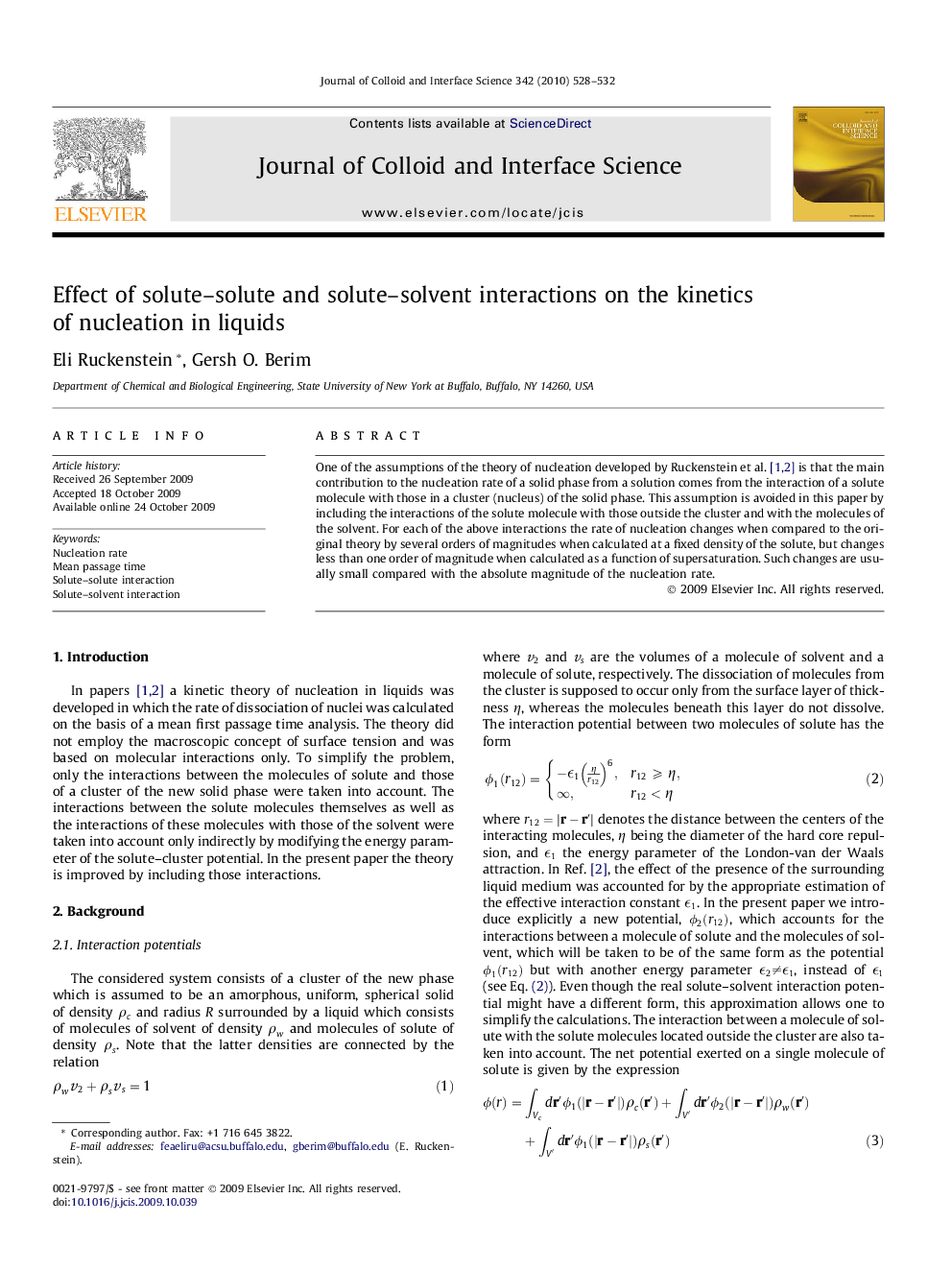| Article ID | Journal | Published Year | Pages | File Type |
|---|---|---|---|---|
| 609553 | Journal of Colloid and Interface Science | 2010 | 5 Pages |
One of the assumptions of the theory of nucleation developed by Ruckenstein et al. [1] and [2] is that the main contribution to the nucleation rate of a solid phase from a solution comes from the interaction of a solute molecule with those in a cluster (nucleus) of the solid phase. This assumption is avoided in this paper by including the interactions of the solute molecule with those outside the cluster and with the molecules of the solvent. For each of the above interactions the rate of nucleation changes when compared to the original theory by several orders of magnitudes when calculated at a fixed density of the solute, but changes less than one order of magnitude when calculated as a function of supersaturation. Such changes are usually small compared with the absolute magnitude of the nucleation rate.
Graphical abstractDependence of the (dimensionless) nucleation rate of a solid phase on supersaturation of a solution for various interactions of a solute molecule with the environment.Figure optionsDownload full-size imageDownload as PowerPoint slide
